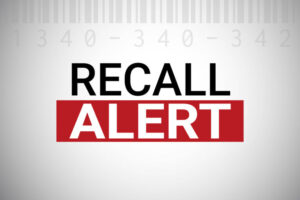Economists and industry analysts in the logistics sector are optimistic these days. After several years of a freight recession, they see a light at the end of the tunnel. Analysts say the industry has endured the recession, and it advises carriers to prepare for a period of “thriving.”
Daniel Rutherford, virtual CFO for Summit Virtual CFO by Anders, believes the thriving period of the economic cycle has already begun.
“Hopefully we’re on the upswing coming out of 2024 and into 2025,” he said. “We are seeing some emerging trends such as the shipper’s diffusion index, which has been in a 30-month low. We are finally seeing it come to a level that indicates we are coming out of this recession.”
Follow the forecast
So, after years in a downturn, how does the industry prepare to come out of the recession and maximize opportunities? Like in most situations, there’s one important key to dealing with change.
“You should always have a plan. We counsel our clients to be ready with a forecast,” Rutherford said.
That forecast should include consideration of the core metrics of the transportation industry — cash, financials, production and pipeline or sales. Of those metrics, cash should be at the forefront of every executive’s mind.
“There are going to be ups and downs in the economy and your business cycle,” Rutherford said.
When a carrier is preparing to endure the next potential downturn, forecasting is vital. But when the industry is preparing to thrive, as it is now, forecasting takes on even greater importance.
Prepare to thrive — with cash
“Now we’re preparing to thrive. Next, we need to know what we need to do to capture and become highly profitable over the next two to three years,” Rutherford said, adding that economists are projecting good things coming as the supply chain is corrected.
Right now, he says, “every business owner should be accounting for their cash.”
Executives must make sure there’s enough cash on hand to operate, as well as enough in reserve. Those making financial decisions must ensure financial statements follow generally accepted accounting principles (GAAP); otherwise, Rutherford says, they’re operating in the dark in terms of finances.
“You can’t look down the road without a forecast,” he said. “For instance, if I buy some equipment, what’s that going to do to my profit and loss and my balance sheet? Is it going to affect my cash flow?”
Good financial statements allow a company to make those forecasts.
Cash is fuel in the tank in terms of trucking,” Rutherford said. “We cannot operate without cash.”
The first thing he looks at when dealing with a client is its cash situation and, with that, receivables and lines of credit. The idea is to know where cash is going to come from if there’s a downturn.
Look at the bigger picture
Hannah Hood, senior resource manager for Summit Virtual CFO by Anders, agrees with the importance of having a good grip on a company’s cash situation — but, she adds, it’s all part of the bigger picture.
“We’re not looking at cash in a silo,” she said. “Cash can provide a false sense of security if you’re not paying attention to what the other side is telling you.”
Anders clients are encouraged to have a game plan that lines up sources of cash and seeks out the best loan terms long before loans are needed.
“The best time to ask for cash is when you don’t need it,” Rutherford said. “We like to see clients look back at their prior year revenue and have access to 10% in cash.” It may seem like a lot, he says, but that includes lines of credit as well.
Rutherford also emphasizes the need to set aside cash funds for taxes.
“We recommend setting aside 40% of forecast net income in a separate bank account,” he said. “In transportation there is a lot of depreciation. You may not have a tax issue now, but it’s going to come down the road.”
Keep up with accounts receivable
Another issue to address is accounts receivable. Executives should concentrate not only on existing receivables, but also those that are unbilled.
“It’s not uncommon to have several hundred thousand dollars of unbilled receivables, depending on the size of your operation,” Rutherford said. “The stronger your financials are and the more information you can provide to lenders, the better access you’re going to have to potentially more cash.”
Accelerating collections and billing are strategies carriers should consider.
“I feel like carriers are ‘sleeping’ (when it comes to) accelerating their collections and their billing,” Hood said, noting that sometimes changing payment terms from 45 to 30 days can help cash flow. “In one case, we realized we actually needed to bill at net 15 and invoice more frequently.”
Cash is king
According to Rutherford, carriers should have multiple cash accounts.
“Some of the cash accounts we recommend are an operating account and a cash reserve account for the rainy day,” he said. “We recommend having a tax reserve account if you can, and then having a line of credit account set up.”
While not all carriers can achieve this immediately, executives should begin now to work toward this goal.
“It will make their operations run more smoothly down the road if they can make sure they have these accounts set up,” Rutherford said.
Being reliable, conservative and largely configured with your industry are keys to success in planning.
“One of the things we talk about is making sure your cost of sales and other markers are in the right ‘buckets’ as laid out for the industry,” Rutherford said. “Look at the TCA’s best practices groups. They show how they like to look at their financials and the buckets they like in a way I think is ideal.
“Cash is not only king; it’s queen, too,” Rutherford concluded.
Since retiring from a career as an outdoor recreation professional from the State of Arkansas, Kris Rutherford has worked as a freelance writer and, with his wife, owns and publishes a small Northeast Texas newspaper, The Roxton Progress. Kris has worked as a ghostwriter and editor and has authored seven books of his own. He became interested in the trucking industry as a child in the 1970s when his family traveled the interstates twice a year between their home in Maine and their native Texas. He has been a classic country music enthusiast since the age of nine when he developed a special interest in trucking songs.














